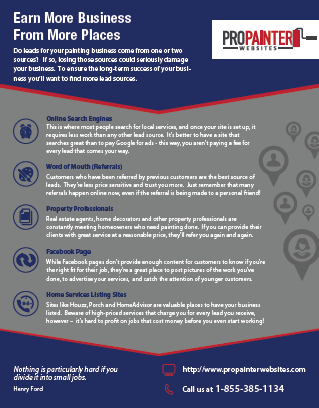Figure Out How Seasonal Factors Affect Industrial External Paint Success And Uncover The Very Best Times To Make Sure Long Lasting Outcomes For Your Project
Figure Out How Seasonal Factors Affect Industrial External Paint Success And Uncover The Very Best Times To Make Sure Long Lasting Outcomes For Your Project
Blog Article
Material Author-Ford Chaney
When you're preparing a commercial outside paint job, seasonal aspects can make or break your results. You'll intend to think about just how temperature and humidity effect paint application and drying times. Choosing the ideal period can ensure your paint sticks appropriately and lasts longer. But which seasons are genuinely the best for this sort of job? Allow's explore source website that can impact your project's success.
The Influence of Temperature Level on Paint Application
When you're planning a business external painting task, the temperature level can dramatically affect how well the paint adheres and dries out.
Preferably, colores para mobile home intend to repaint when temperature levels vary between 50 ° F and 85 ° F. If it's as well chilly, the paint may not cure appropriately, causing concerns like peeling off or breaking.
On the other side, if it's as well warm, the paint can dry also quickly, stopping appropriate attachment and causing an irregular coating.
You must also think about the time of day; morning or late afternoon uses cooler temperatures, which can be much more desirable.
Always inspect the manufacturer's recommendations for the details paint you're using, as they usually offer assistance on the excellent temperature level array for optimal results.
Humidity and Its Result on Drying Times
Temperature isn't the only ecological aspect that affects your commercial exterior paint task; humidity plays a significant function as well. High humidity levels can slow down drying out times dramatically, impacting the overall quality of your paint job.
When the air is saturated with dampness, the paint takes longer to cure, which can cause concerns like inadequate adhesion and a higher danger of mildew development. If you're repainting on a particularly damp day, be gotten ready for prolonged delay times in between coats.
It's critical to keep an eye on regional weather and plan as necessary. Ideally, aim for moisture levels in between 40% and 70% for optimum drying.
Maintaining these consider mind guarantees your project remains on track and supplies an enduring coating.
Best Seasons for Commercial Outside Painting Projects
What's the most effective time of year for your industrial outside painting projects?
Spring and very early fall are typically your best choices. Throughout these periods, temperature levels are moderate, and moisture degrees are often lower, producing optimal problems for paint application and drying out.
Prevent summer's intense heat, which can cause paint to dry also quickly, leading to inadequate bond and coating. Similarly, winter's chilly temperature levels can prevent appropriate drying and curing, taking the chance of the long life of your paint work.
Aim for days with temperatures between 50 ° F and 85 ° F for optimum results. Keep in mind to examine the local weather report for rainfall, as wet problems can destroy your task.
Planning around these elements ensures your painting job runs efficiently and lasts longer.
Conclusion
To conclude, preparing your commercial external painting projects around seasonal factors to consider can make a considerable difference in the result. By scheduling work throughout the suitable temperatures and moisture degrees, you'll make certain better bond and drying times. Bear in mind to watch on neighborhood weather prediction and pick the correct time of year-- springtime and early autumn are your best bets. Taking these steps will help you attain a long lasting and professional coating that lasts.
